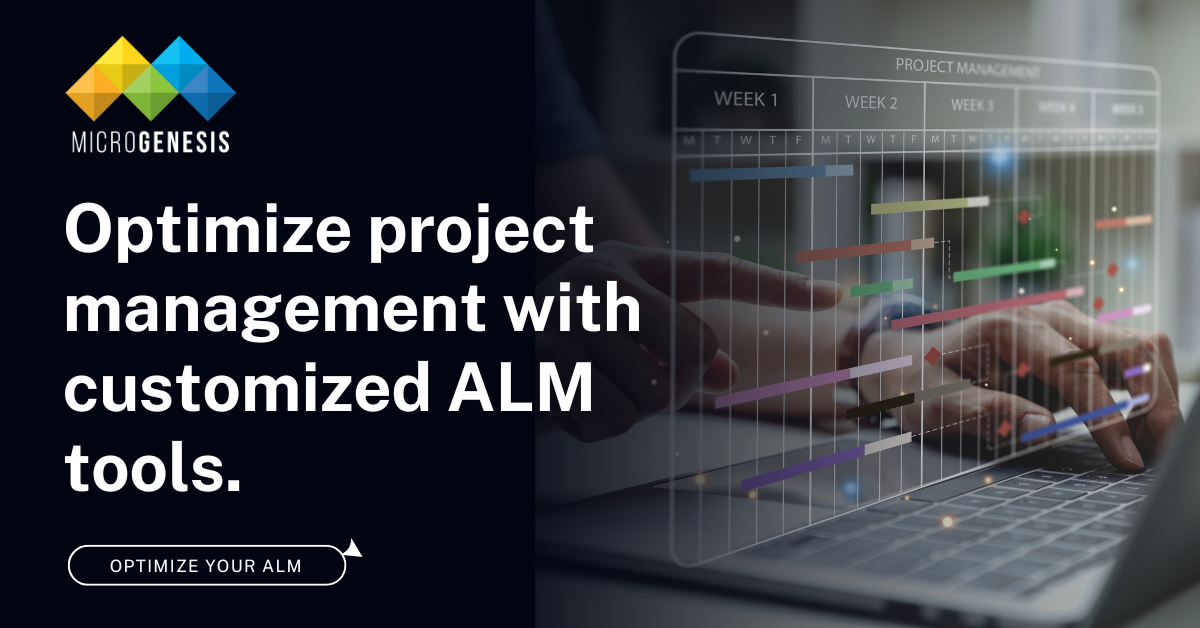ALM solutions are undoubtedly the true heroes, coordinating every step of the application lifecycle from planning to deployment. But what if these instruments were even more incredible?
Tailored ALM solutions can offer a thoughtfully designed workspace, automated tasks, and easy visibility of key metrics to increase productivity and efficiency. This is the real potential of tailored ALM tools.
This article explores the customisation options within ALM software and offers valuable insights into best practices for configuration.
Customisation Options in ALM Tools
Custom Fields, Workflows and Dashboards
Customising ALM tools involves modifying fields, workflows, and dashboards to align with unique business processes. For instance:
- Custom Field addition allows teams to capture specific data points relevant to their projects.
- Custom workflows enable the automation of repetitive tasks and ensure that processes follow the desired sequence.
- Custom dashboards provide visualisations of key metrics and KPIs, facilitating better decision-making.
Importance of Tailoring ALM Tools
Tailoring ALM tools to organisational needs helps in maximising their benefits and efficiency by ensuring that the ALM support the specific workflows and data requirements of the organisation.
Why is it important to choose tailored ALM tools?
- Application lifecycle management in software project management streamlines the process with a unified toolchain, enhancing traceability and efficiency.
- Choose an ALM solution manager with seamless integration for popular platforms like Microsoft Office, particularly Word and Excel
- Prioritise a highly customisable ALM platform with flexible workflows and reporting options.
- Agile management breaks down projects and enables innovators like application developers to focus on smaller tasks, and reduces the need for additional tools.
- Security is crucial when selecting an ALM solution to protect sensitive business data and prevent costly breaches. A data breach can cost businesses an average of $4.45 million and cause reputational damage.
Step-by-Step Guides for Configuring ALM Tools
Setting Up Custom Fields and Workflows
- Identify Requirements: Determine the specific data points and processes that need to be captured and automated.
- Create Custom Fields: Use the ALM tool’s configuration options to add new fields that capture the necessary data.
- Design Workflows: Map out the desired process flow and configure the ALM automation tools for these steps. This might include setting up task dependencies, notifications, and approval processes.
- Test and Iterate: After configuring the fields and workflows, test them with a small team to identify any issues. Iterate based on feedback.
Creating Custom Dashboards
- Identify the metrics and KPIs that are critical for your project.
- Choose from the ALM tool’s available visualisation options, such as charts, graphs, and tables.
- Link the dashboard to the relevant data sources within the ALM tool.
- Arrange the visual elements in a way that is intuitive and provides a clear overview of project status.
Best Practices for ALM Tool Configuration
Ensuring Flexibility and Scalability
- Configure the ALM tool in a modular fashion to allow for easy updates and changes.
- Maintain comprehensive documentation of all customisations and configurations to ensure continuity.
- Provide training to team members to ensure they understand how to use the customised tool effectively.
If you want to know more about the best practices for integrating ALM tools into your software development process, check out this complete guide to application lifecycle management.
Showcase of Customisations in HCL Software and Siemens Polarion ALM
HCL Software offers flexible workflows and integration options that cater to complex project requirements. Siemens Polarion ALM provides robust traceability, compliance, and real-time collaboration features, making it a preferred choice for industries requiring stringent regulatory adherence.
Polarion ALM, with its integration with approaches like Agile and Waterfall, offers flexibility for teams to adapt to their needs. Codebeamer excels in product line configuration and regulatory compliance, making it suitable for industries like automotive and medical devices.
Case Studies
Veoneer
For several reasons, Veoneer, a quiet partner behind the most cutting-edge automobiles, chose PTC CodeBeamer ALM as their ALM solution to increase automotive safety.
- Ease of Use: Employee learning and navigation were made simple by CodeBeamer’s user-friendly interface, cutting down on training time.
- Compliance: CodeBeamer is prepared to handle several automotive industry standards, such as Automotive SPICE, FMEA, and ISO 26262.
- Traceability: It ensures accurate tracking of requirements and modifications by offering real-time traceability across the whole V-model lifetime
- Cost Savings: CodeBeamer resulted in considerable savings on direct tooling expenses.
- Scalability: Over time, the tool effectively grew with the company’s increasing user base, and staff increased from 1,100 to 6,900.
- Flexibility: CodeBeamer’s versatility extended beyond engineering, including IT and industrial procedures, enhancing the overall effectiveness of the organisation.
Given these elements together, CodeBeamer was the best option to handle Veoneer’s intricate and extensive ALM requirements.
Sirona Dental Systems
Sirona Dental Systems utilised Polarion ALM to achieve end-to-end traceability and compliance with FDA regulations / IEC 62304. The tool’s customisable dashboards provided real-time insights into project status, enabling timely decision-making.
Tips and Tricks for Effective ALM Tool Configuration
- Start Small and Expand Gradually: Begin by making small customisations to address immediate needs, and then grow based on feedback from users.
- Involve Users Early: Engage end-users in the setup process to ensure that the tool aligns with their workflows.
- Make Use of Integrations: Connect your ALM tool with other ALM software solutions such as version control and project management tools to streamline your workflows.
- Prioritise Security and Compliance: Implement strong security features like permission-based access and encryption to safeguard sensitive data.
- Customise Dashboards: Set up dashboards to show real-time project metrics and KPIs for better monitoring and decision-making.
Maximising the Value of ALM Tools
Customising and configuring ALM tools can transform them into powerful assets that enhance efficiency, collaboration, and product quality.
By following best practices and leveraging the tool’s customisation options, organisations can ensure their ALM solutions are tailored to their specific needs, ultimately maximising their value.
Conclusion
Businesses should adopt best practices for Application Lifecycle Management Services, such as starting small, engaging users, and using integrations. They should continuously change configuration and customization based on company demands.
MicroGenesis optimizes ALM tools for companies, ensuring development objectives and innovation. ALM consulting ensures successful project management, informed decision-making, and optimal solution implementation, alongside enterprise digital transformation to enhance organizational processes.




